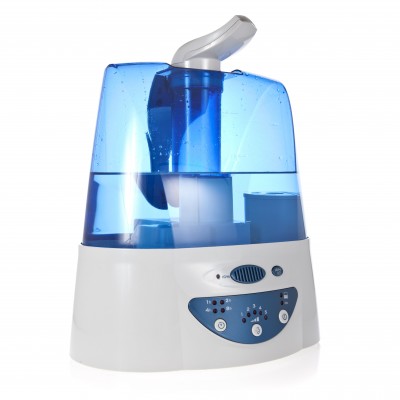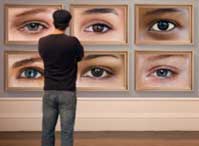 The nose warms, filters, and humidifies air before passing it on to the lungs with the aid of the scroll-shaped structures called turbinates. You’ve got six of them, three in each nasal passage. Mechanically engineered better than most HVAC systems, the turbinates change size throughout the day according to a regular pattern. When a turbinate swells, it increases its surface area enabling it to filter and humidify. Its mirror image partner in the opposite nostril, will shrink as small as possible to allow air to pass and mucous to drain. Each cycle of swelling or constricting lasts about 30 minutes, so depending on where you are in your “nasal cycle,” you may be able to breathe better on one side of the nose than the other!
The nose warms, filters, and humidifies air before passing it on to the lungs with the aid of the scroll-shaped structures called turbinates. You’ve got six of them, three in each nasal passage. Mechanically engineered better than most HVAC systems, the turbinates change size throughout the day according to a regular pattern. When a turbinate swells, it increases its surface area enabling it to filter and humidify. Its mirror image partner in the opposite nostril, will shrink as small as possible to allow air to pass and mucous to drain. Each cycle of swelling or constricting lasts about 30 minutes, so depending on where you are in your “nasal cycle,” you may be able to breathe better on one side of the nose than the other!
Turbinates develop in a growing baby, from a solid sphere of bone, into a bony balloon, and then uncurl into a flat plate of bone, covered by a mucous membrane. Commonly, the turbinate development arrests in the shape of a bony balloon and never uncurls. This bony balloon shape, called a conchae bullosa, causes and contributes to nasal airway obstruction, sinusitis, hyponasal voice, and sleep apnea. While medical treatments to prevent swelling of the overlying mucous membranes can help to temporarily increase the size of the airway, surgery may be the only curative treatment. So important are the turbinates, that when a surgeon operates to fix a crooked septum but fails to correct misshapen and oversized turbinates, the patient will not notice a significant improvement.
Turbinates can cause mischief in other ways. In fact, they can swell to fill as much space as is available. For example, when the septum (the dividing wall of cartilage and bone that separates your nostrils) is crooked, one side is bigger than the other. The turbinates on the larger side sometimes expand to fill that entire air space. While that enlarged turbinate obviously obstructs airflow, it can also obstruct mucous drainage from the sinuses and cause or contribute to sinusitis.
Dr. Yagoda is both an otolaryngologist (a specialist in the care of the ear, nose, and throat) and a facial plastic surgeon. She can expertly diagnose and correct all functional and aesthetic nasal concerns ensuring that your nose will not only look better, but work better too. Call our office to schedule a personal consultation.
Read about SLOWtox, a new medically proven treatment using Botox to temporarily stop a dripping, running nose.


































